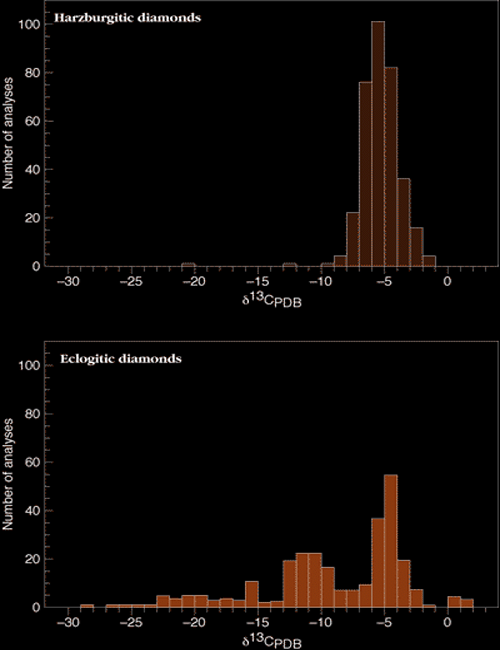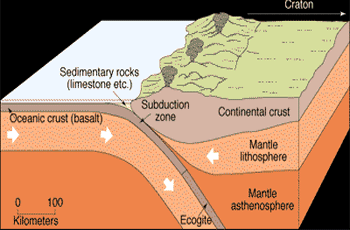Where does the carbon come from?
Most diamonds consists of primitive carbon from Earth's mantle, but those from eclogites probably contain carbon recycled from the ocean crust by plate tectonics -- the carbon of microorganisms. How do we know? Carbon atoms arise in three different masses, or isotopes. Unlike high-temperature processes in deep Earth, low- temperature, biological processes, such as photosynthesis, are sensitive to the differences in mass, and keenly sort different carbon isotopes. Therefore, the ratios of carbon isotopes in organic materials -- plants, animals, and shells -- vary, and also differ from those in the carbon dioxide of the atmosphere and the oceans. Geochemists "read" the carbon isotopes in samples to understand nature's record.
Almost all carbon atoms, the ones in a diamond or a tree or you, came from the stars. Mostly at Earth's surface the proportions of 12C and 13C (the carbon isotopes of mass 12 and 13) get redistributed. Expressed as simple numbers in 13C notation -- in which larger numbers mean more 13C -- organic carbon has large negative values, average Earth has a gently negative value, and the carbon in shells is near zero.

The narrow range of 13C values for harzburgitic diamonds in the histogram on the top resembles the range of average Earth, representing that the mantle is the likely carbon source. The big range for eclogites suggests mixing of organic carbon (the strongly negative numbers), mantle carbon (mildly negative numbers), and shell-like carbon (values near zero). These data support recycling of once-living carbon from Earth's surface deep into the layer to form diamond.

When ocean floor slides into the layer, the basaltic rock becomes eclogite, and organic carbon in sediments may become diamond.
Next >>